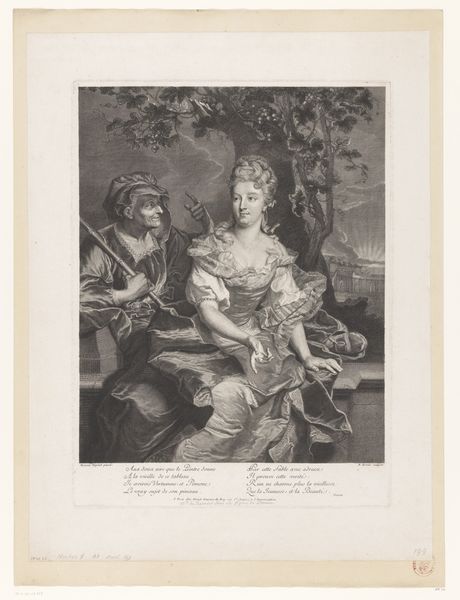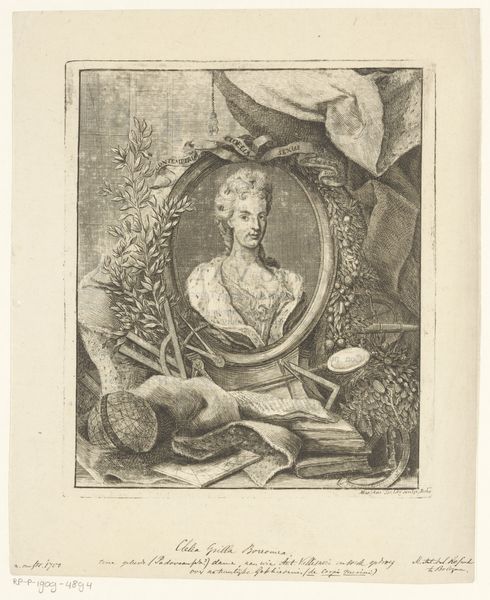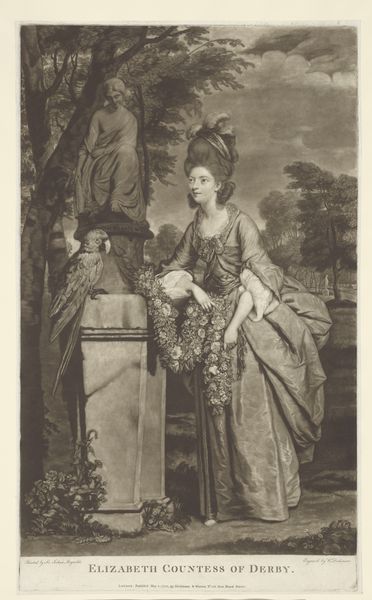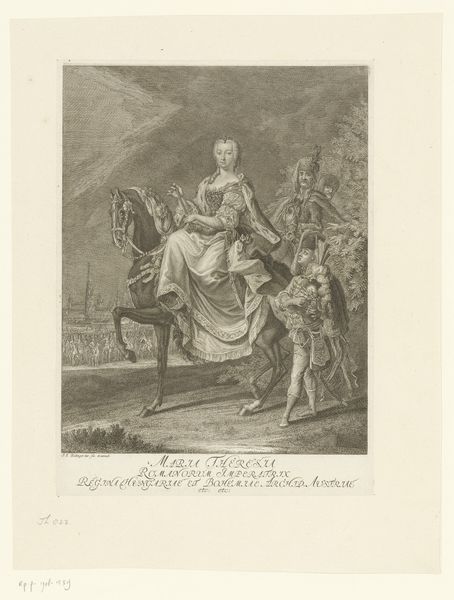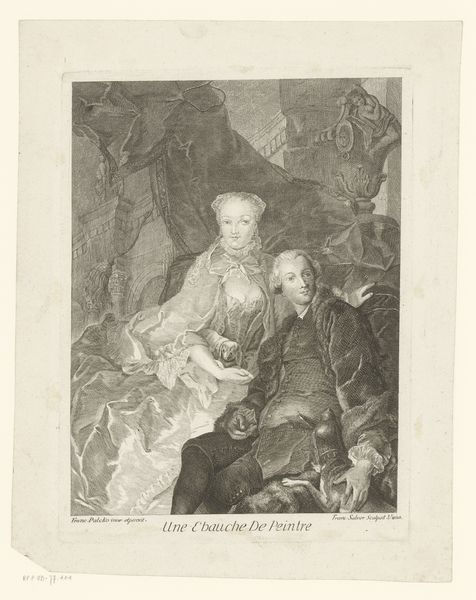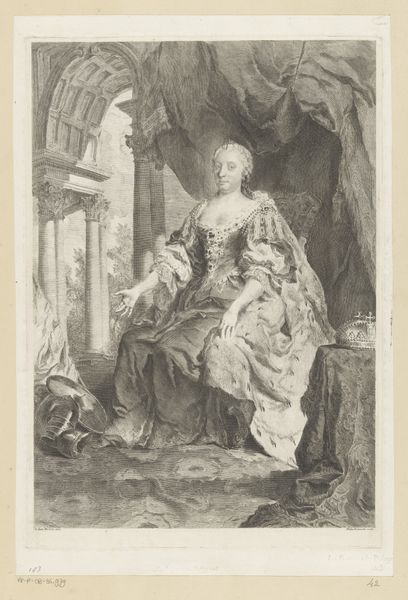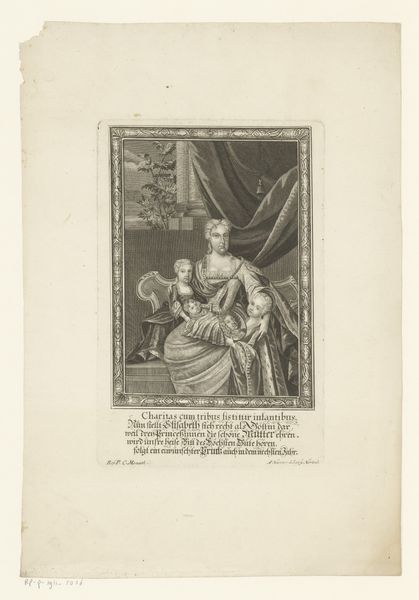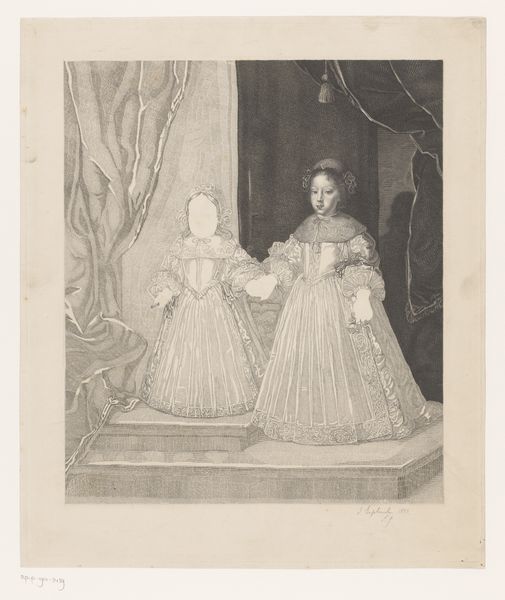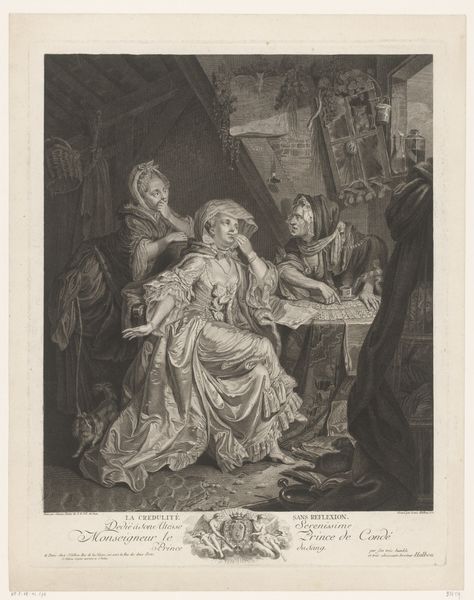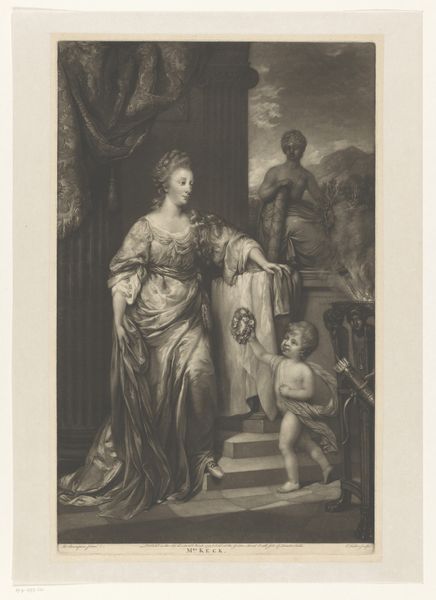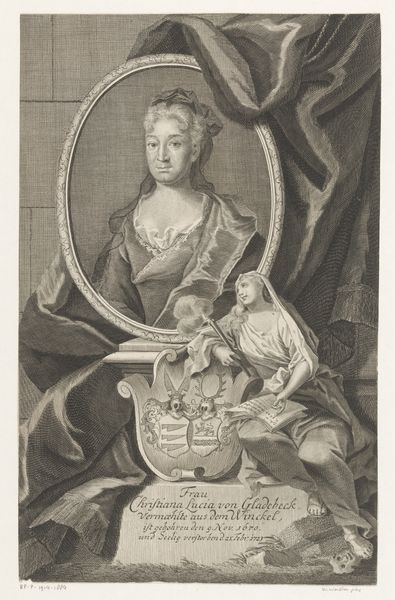
Portret van koningin Charlotte en haar dochter 1780
0:00
0:00
johannchristiangottfriedfritzsch
Rijksmuseum
pencil, engraving
#
portrait
#
pencil drawn
#
neoclacissism
#
aged paper
#
light pencil work
#
pencil
#
line
#
pencil work
#
history-painting
#
academic-art
#
engraving
Dimensions: height 569 mm, width 429 mm
Copyright: Rijks Museum: Open Domain
Curator: This is Johann Christian Gottfried Fritzsch’s "Portret van koningin Charlotte en haar dochter," created around 1780. It is currently housed in the Rijksmuseum. Editor: It has a decidedly cool, distant feel. The figures are meticulously rendered, almost clinically so, with a striking emphasis on line and the stark contrast in values characteristic of engravings. Curator: It is an engraving, yes, meticulously crafted using pencil on what appears to be aged paper, fitting perfectly within the Neoclassical art movement which drew upon antiquity, and prioritised line and form. Editor: Indeed. Note how the artist uses line to define the contours of their garments, hair, and facial features with incredible accuracy. I am fascinated by the fabric and how line defines the shapes and patterns to be so precise to evoke texture through the repetition of such light lines. Curator: The details of Queen Charlotte’s dress speaks volumes about the era's textile industry and elaborate courtly fashions. The means of production of clothing, and accessories represented a huge portion of Europe's economy and it's telling to see it immortalized in this medium. Editor: And there's something almost haunting in how the artist renders the faces, catching this restrained, aristocratic stillness that encapsulates a kind of removed power. The shading is done in such light work. Curator: The presence of Windsor Castle in the backdrop also alludes to the influence of political symbolism on portraiture from the era, a direct commentary on who it depicts and represents. Editor: What is also fascinating is seeing Fritzsch embracing academic traditions to bring depth to the forms, and structure—a calculated demonstration of skill within the visual and theoretical grammar he adhered to so well. Curator: He captures Queen Charlotte in such a refined manner. Fritzsch reminds us of the historical conditions that produced the artwork. Without Queen Charlotte as patron, and his artistic process—it couldn't exist. Editor: For me, looking at the artwork in this way lets the qualities inherent in its formal design come to the surface. Each contributes towards experiencing the aesthetic values transmitted with acute deliberateness.
Comments
No comments
Be the first to comment and join the conversation on the ultimate creative platform.
